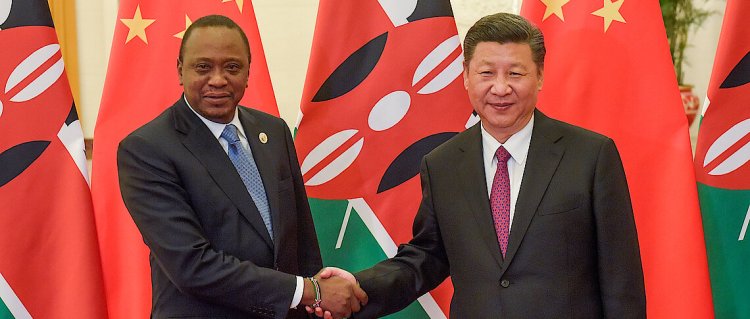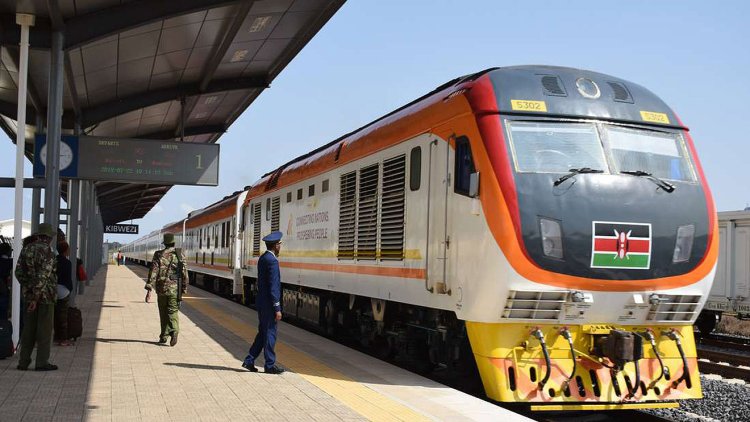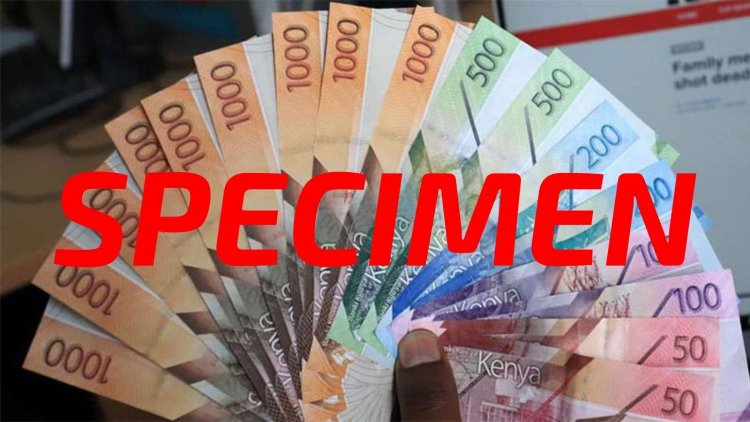China Blocks Kenya From Loan Relief Programme
Chinese Foreign Minister Wang Yi stated that the programme was aimed to support countries that were struggling to repay their debts.

Kenya will not be one of the 17 countries that will benefit from a loan relief from China this year, as part of its plans to support the poorest countries in Africa.
Chinese Foreign Minister Wang Yi stated that the programme was aimed to support countries that were struggling to repay their debts.
The deal announced last week will see Beijing waiver 23 matured interest-free loans for 17 unnamed African countries, which are classified as least developed countries.

The SGR Madaraka Express train at Kibwezi station, Makueni County. /NAIROBI NEWS
Yi noted that the debt relief plan “demonstrates China’s commitment to fostering stronger economic ties with the African continent”.
He revealed that Kenya was left out of the deal as it was classified as a lower-middle-income country, which does not sit well with the Beijing scheme.
“State Councillor and Foreign minister Wang Yi mentioned during his remarks at the coordinators’ meeting on the Implementation of the Follow-up Actions of the Eighth Ministerial Conference of the Forum on China-Africa Cooperation that China will waive the 23 interest-free loans for 17 African countries that had matured by the end of 2021,” the Chinese embassy in Nairobi told the Business Daily.
“The African countries mentioned here refer to the least developed countries. Therefore, Kenya is not on this list."
A 2021 report by the publication revealed that Kenya was third in terms of money owed to China in Africa, after Angola and Ethiopia.
At the time Angola led with a debt of $25 billion (Ksh2.9 trillion), Ethiopia followed with $13.5 (Ksh1.6 trillion), and Kenya with $7.9 billion (Ksh946 billion).
Kenya is currently the largest economy in East Africa and joined the league of the world's lower middle-income nations in 2014 after it surpassed the United Nations’ $1,045 gross domestic product (GDP) per capita threshold after rebasing its economy.
The World Bank categorises the world's countries into several development groups based on a set of criteria. They include high-income countries, higher medium-income countries, lower-middle-income countries, and low-income countries.
The high-income countries have a Gross National Income (GNI) per capita of at least $12,696 (Ksh1.5 million), while the upper middle-income countries have a GNI per capita of at least $4,096 (Ksh490,000).
The GNI per capita in lower-middle-income countries stands at between $1,046 (Ksh125,467) and $4,095 (Ksh491,195), while low-income countries have a GNI per capita of $1,045 (Ksh125,347) or less.
Kenya planned to spend a total of Ksh117.7 billion on Chinese debt in the period, of which about Ksh24.7 billion is in interest payments and almost Ksh93 billion in redemptions, according to budget documents.
Kenya faced a deteriorating cash-flow situation, marked by falling revenues, worsening debt service obligations, and the effects of the COVID-19 pandemic. The debt burden has recently been worsened by the economic turmoil unleashed by the war in Ukraine but Kenya has never defaulted on its obligations.
The country last year asked for an extension of the debt repayment moratorium from bilateral lenders, including China, by another six months to December 2021, saving it from committing billions to Beijing lenders. The moratorium started in January 2021.
China postponed the repayments in January, helping Kenya temporarily retain Ksh27 billion, which was due for six months ending June 30.

An image of a bundle of notes. /FILE

 admin
admin 




